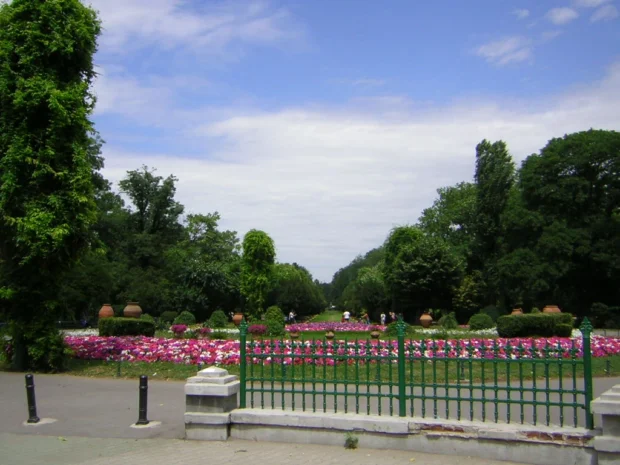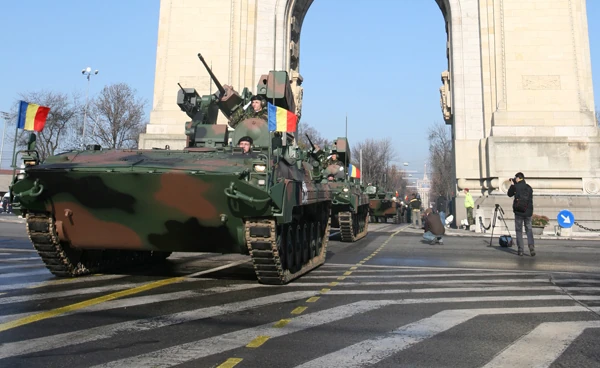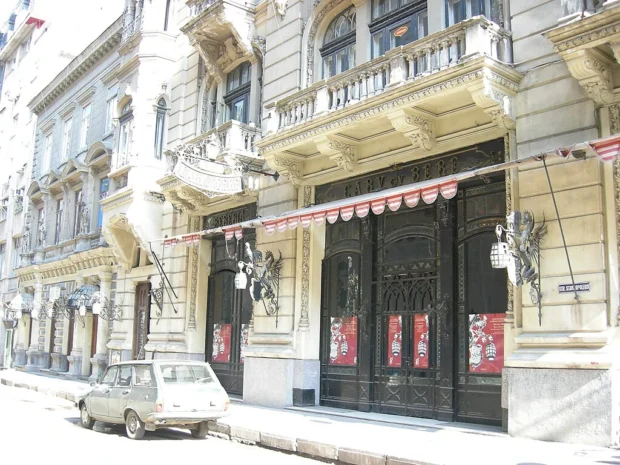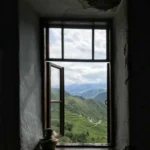Walking through Bucharest, Romania, feels like stepping into a storybook full of contrasts. The city is a mix of old and new, grand buildings and quiet corners, loud markets and peaceful parks. For those curious about history, culture, and everyday life, Bucharest offers many moments to enjoy and remember. This article brings you useful advice and interesting tales to help you feel at home while discovering the heart of Romania’s capital city.
Table of Contents

Historic Monuments and Architectural Wonders
One of the most striking sights in Bucharest is the Palace of the Parliament. It is one of the largest administrative buildings in the world. The building’s massive size is hard to imagine until you see it in person. It was built during the 1980s under the leadership of Nicolae Ceaușescu, a time when Romania was ruled by a strict communist government. Walking inside feels like stepping into a different era. If you want to learn more about its history and the building’s secrets, visit the official page of the Palace of the Parliament.
For travelers interested in exploring the Balkans, the vibrant city of Skopje offers a unique blend of history and culture worth discovering here.

Nearby, the Romanian Athenaeum offers a quieter, more artistic atmosphere. This beautiful concert hall hosts classical music concerts and is admired for its round shape and decorated ceiling. Its golden dome shines especially bright on sunny days. Around it, you can find small cafes where locals talk about music, politics, and everyday life. The Athenaeum is a symbol of cultural pride for Bucharest.

Wandering through the old part of the city, you will notice charming buildings with colorful shutters and carved wooden doors. This style is part of Romania’s vernacular architecture, which uses local materials and traditional designs. Many of these houses survived through wars and political changes, quietly telling stories of the past. Look out for the Lipscani district, where these old buildings come alive with shops and street artists.

Hidden Corners and Quiet Moments in Bucharest
Not far from the busy center, there are secret gardens and small parks where you can sit and watch the world go by. Cișmigiu Gardens is one such place. It is the oldest public garden in Bucharest and a favorite spot for families to relax. In spring, the flowers bloom in bright colors, and in winter, the small lake freezes, inviting children to skate. You might see old men playing chess under the trees or hear the cheerful chatter of children feeding birds.

Another quiet gem is the Bellu Cemetery, often called an open-air museum. Here lie famous Romanian poets, artists, and politicians. The tombstones are works of art themselves, with carved angels, symbols, and stories from times long past. It may seem strange to visit a cemetery, but in Bucharest, it is a place to feel connected to the city’s memory and spirit.

Where to Stay: Neighborhoods That Suit Your Style
Choosing where to stay in Bucharest depends on what you want to feel and do. If you enjoy the energy of cafes, bars, and shops, the Old Town (Lipscani) is perfect. It has many guesthouses and small hotels that let you wake up right where the city buzzes. For a quieter experience, try the area near Herăstrău Park. Here, you can enjoy green spaces and peaceful walks along the lake.

In the northern part of the city, near Piața Victoriei, you will find a mix of modern buildings and old villas. This area offers easy access to museums and theaters. Public transport here is good, with trams and buses that connect you to the center. Remember, the metro system is fast and safe, a good choice for getting around quickly without worrying about traffic.

Taste the Flavors of Bucharest’s Neighborhoods
Bucharest’s food scene is a bridge between tradition and modern tastes. When you are in the Old Town, try sarmale – cabbage rolls filled with meat and rice. It is a Romanian classic, often served with mamaliga, a cornmeal dish similar to polenta. The smell of freshly baked covrigi (pretzels) on street corners will invite you to stop for a snack.

For something lighter, visit a market like Obor. Here, you can find fresh fruits, cheeses, and smoked meats. The market is lively early in the morning, when sellers shout prices and customers haggle. It is a good place to feel the rhythm of everyday life. If you want to enjoy a meal in a specific district known for food, check out the area around Piața Amzei, where small bistros serve meals with local ingredients and modern twists.

Getting Around: Simple Ways to Move in Bucharest
Henri Coandă International Airport, the main gateway to Bucharest, is about 16 kilometers from the city center. From there, you can take a bus that connects directly with the metro station. The metro is the most efficient way of traveling across the city, especially during busy times. Trams also run on several routes, offering a chance to see the city while you travel.

Walking is enjoyable in the central areas, but be careful crossing some streets – drivers can be fast and impatient. Remember, cars do not always stop for pedestrians, so keep your eyes open. Public transport tickets are affordable and easy to buy at kiosks and stations. Avoid rush hour if you want a more comfortable ride.

Learn the Customs: Friendly Ways to Connect
Romanian people are warm but sometimes a bit reserved at first. A polite greeting and a smile go a long way. When invited to someone’s home, it is kind to bring a small gift, such as flowers or sweets. If you meet older people, use formal language until they suggest otherwise. It shows respect and good manners.
In social settings, avoid talking loudly or interrupting others. Romanians appreciate calm and friendly conversations. Also, it is common to remove your shoes when entering a home, so be prepared for that custom. Finally, when visiting churches or monasteries, dress modestly, covering shoulders and knees, as a sign of respect.
Festivals, Music, and Folk Traditions in the City
Bucharest is not just about buildings and food; it also holds lively traditions. In spring, the city celebrates Mărțișor, a festival welcoming the arrival of March with red and white strings symbolizing health and luck. Many shops and street vendors sell these tiny charms, and you can feel the festive mood everywhere.
Folk music is often heard in small clubs and cultural centers. The Romanian violin and the cimbalom (a type of hammered dulcimer) create sounds that seem both sad and joyful. Some evenings, you might see locals dancing traditional dances like the Hora, a circle dance symbolizing unity. These moments remind you that Bucharest is a city where old roots still grow strong.
Final Thoughts on Bucharest’s Layers and Stories
Bucharest is a city that invites you to look closer. Behind its wide boulevards and loud traffic, there are small cafes filled with stories, quiet parks hiding memories, and buildings that carry the weight of history. Whether you admire its grand architecture or chat with friendly locals, this city offers more than first meets the eye.
Take your time to wander, listen, and taste. Bucharest will surprise you with its warmth and spirit, making you want to return again and again.

Eastern Europe travel specialist uncovering hidden gems from the Baltics to the Balkans.
- National Museum of Romanian History (11320727104) by Jorge Láscar from Australia on Wikimedia Commons – cc by 2.0
- Bucharest – Palace of the Parliament (2024) (2) by Jorge Franganillo on Wikimedia Commons – cc by 2.0
- Bucharest Strada Lipscani by Tiia Monto on Wikimedia Commons – cc by-sa 4.0
- Bucharest – Romanian Athenaeum (29009706076) by Ștefan Jurcă from Munich, Germany on Wikimedia Commons – cc by 2.0
- Bucharest – Village Museum 3 – church by Pudelek (Marcin Szala) on Wikimedia Commons – cc by-sa 3.0
- Cismigiu-Garden-Bucharest-7 by Mastermindsro on Wikimedia Commons – cc by-sa 3.0
- Romania-1125 – National Art Museum (7546247288) by Dennis G. Jarvis on Wikimedia Commons – cc by-sa 2.0
- Bucharest – Stavropoleos Monastery (30801075602) by Ștefan Jurcă from Munich, Germany on Wikimedia Commons – cc by 2.0
- Piata Revolutiei, Statuia lui Carol by Nicubunu on Wikimedia Commons – cc by-sa 3.0
- MLI-84M Romanian National Day 2009(rehearsal) by Valentin Ciobîrcă on Wikimedia Commons – cc by-sa 3.0
- Caru cu Bere 2 by Joe Mabel on Wikimedia Commons – cc by-sa 3.0
- Bucharest Day 2 – Unirii (9337908714) by Stefan Jurca from Munich, Germany on Wikimedia Commons – cc by-sa 2.0
